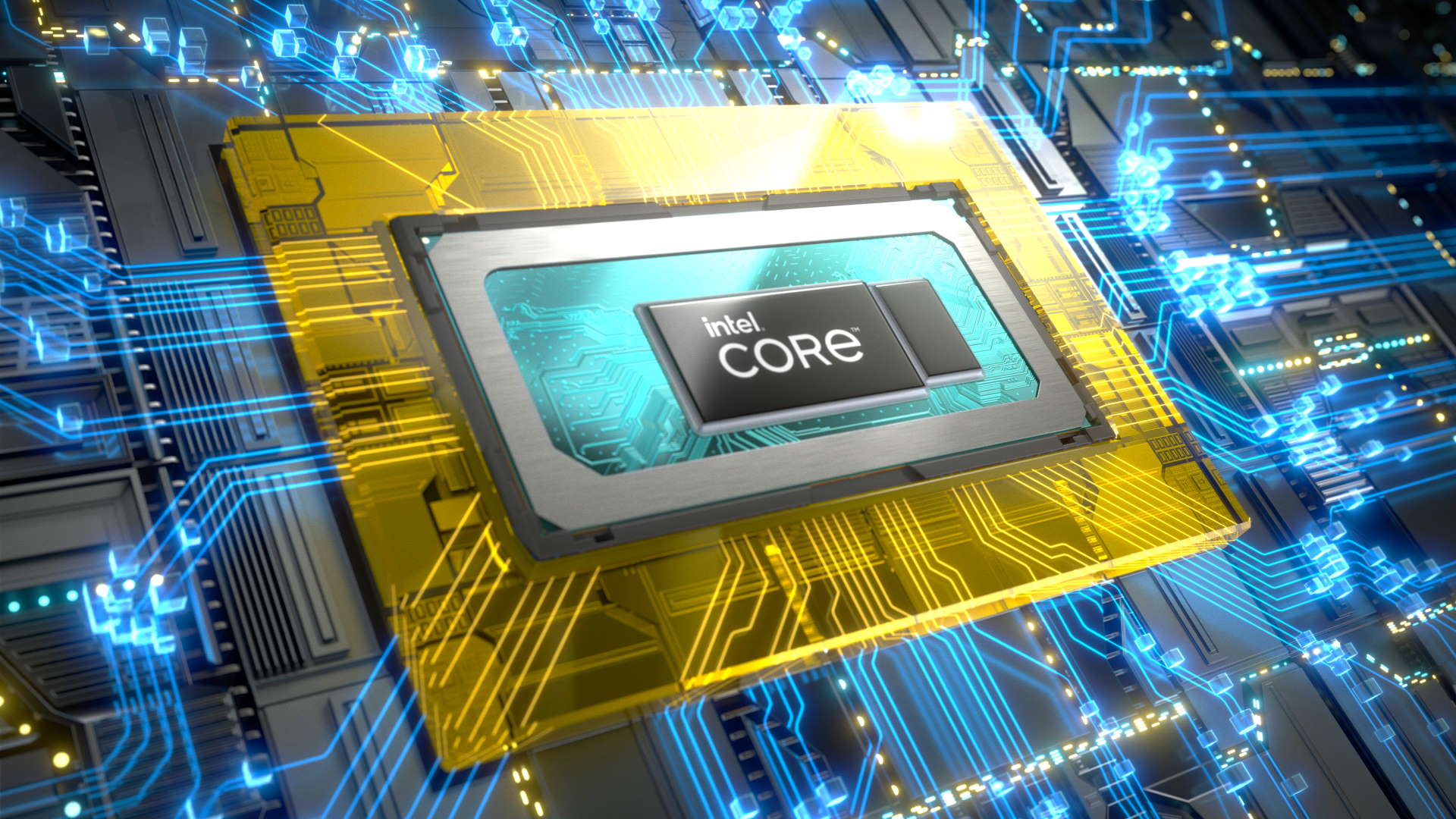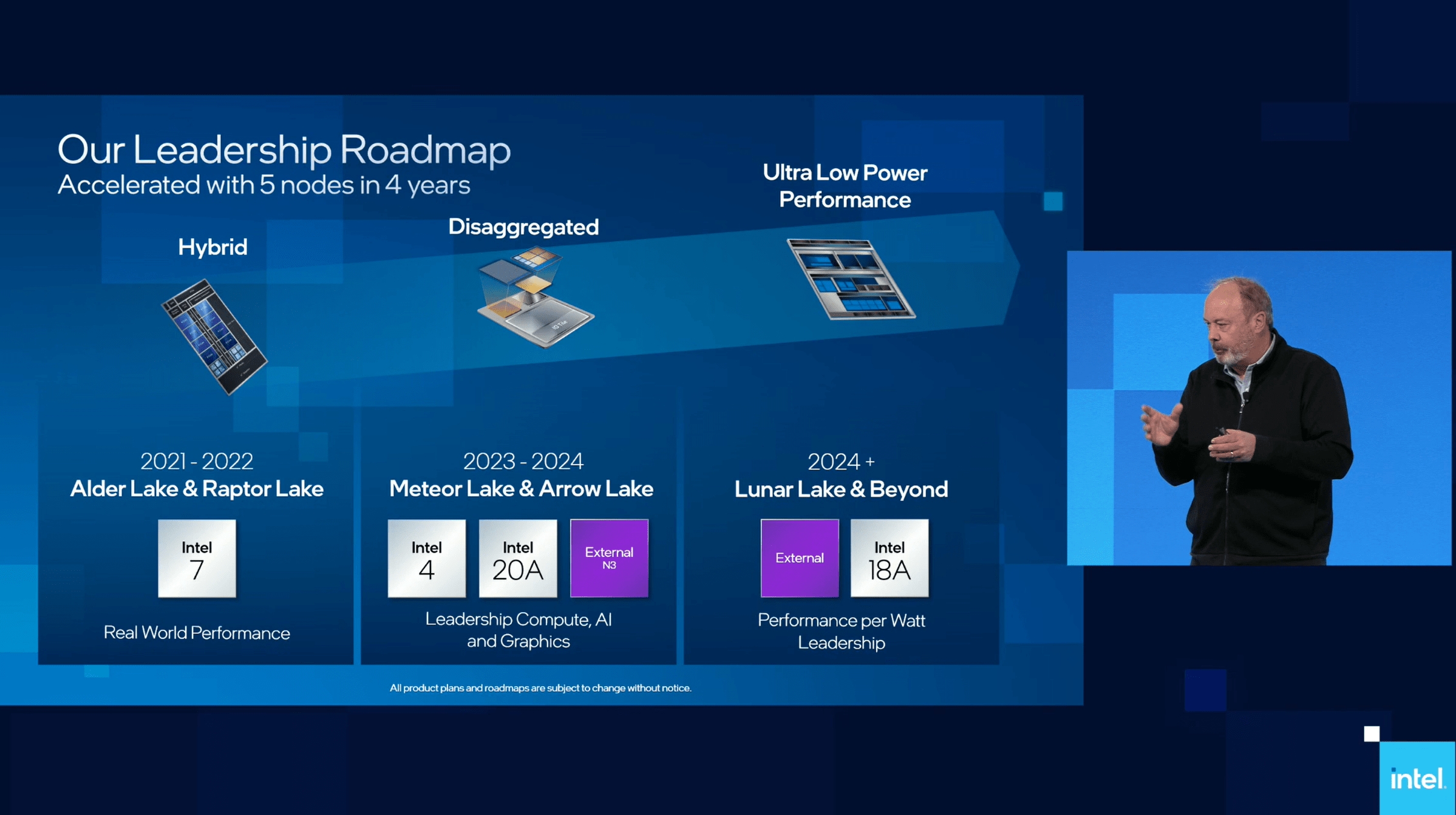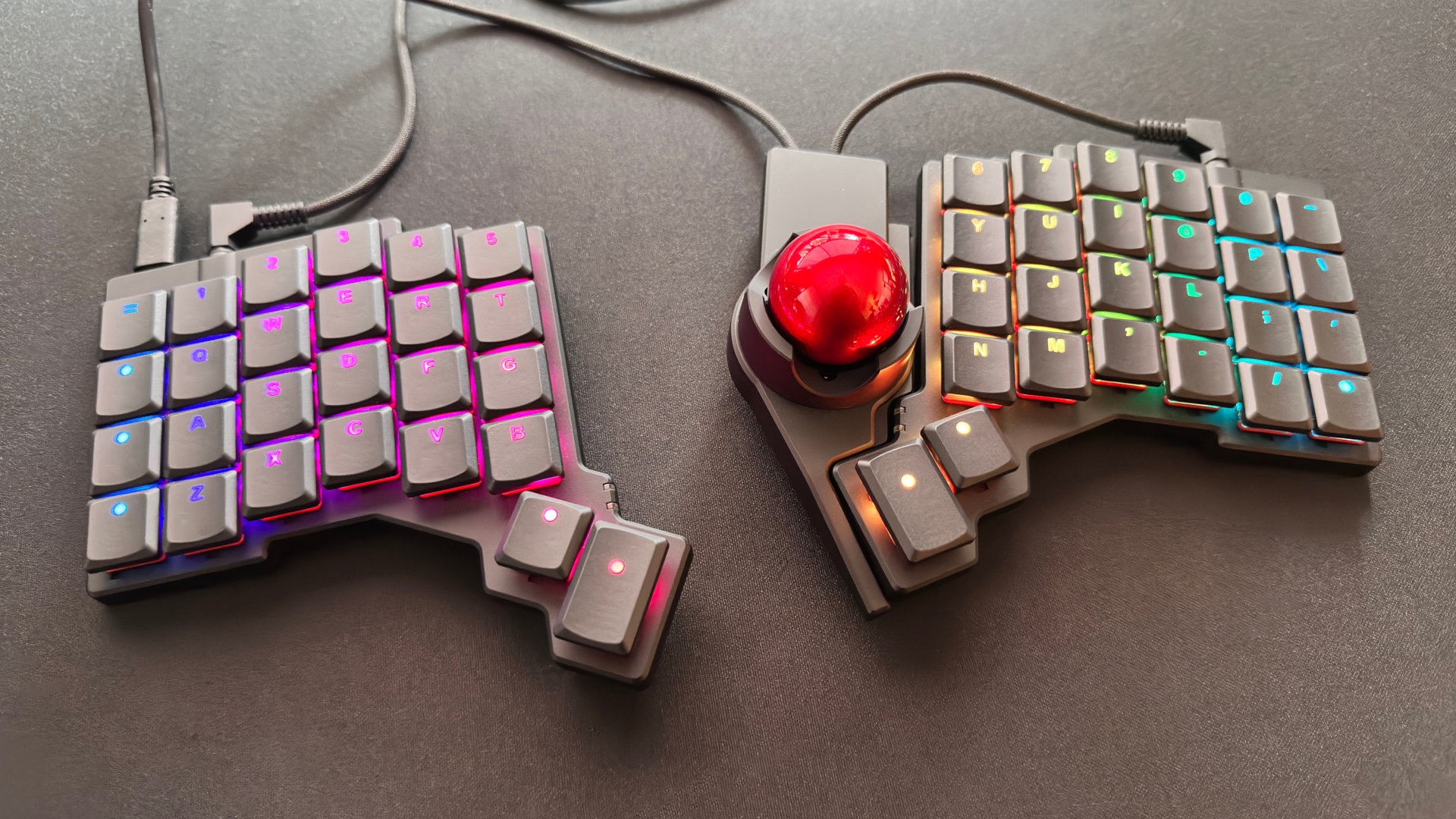Intel's first chiplet CPUs promise 20% higher frequencies at the same power level as Alder Lake
Let's hope all goes to plan.

Intel has outlined some impressive goals for its next-gen Meteor Lake CPUs to get any PC gamer salivating. These include delivering greater than 20% faster clock speeds for the same power as Alder Lake uses today, and the use of EUV (extreme ultraviolet) lithography for a much improved Intel 4 process node.
The Meteor Lake processor generation hasn't got an official release date yet, but it's expected to arrive later in 2023 if all goes to plan. This will be the first of Intel's consumer CPUs to actually use a chiplet design, connecting compute, GPU, and SoC dies via its Foveros packaging process. It's not the next chip generation expected from Intel—that's Raptor Lake, a refresh of the existing Alder Lake processors—but it is the next one after that.
That hasn't stopped some of the juicy details from coming out about this future chip generation, however, as Intel has elaborated more on this upcoming chip release at the 2022 IEEE VLSI Symposium.
Most of the following information was included in slides taken from the show by Twitter account @phobiaphilia and later reported by ComputerBase, but the cited tweets have since been deleted.
Still, it appears as though Intel is pressing on as planned with Meteor Lake. Meteor Lake will be the first consumer CPU built using the Intel 4 process node, and with that new process comes a target of more than 20% higher frequencies for the same power as the process node used by existing 12th Gen chips, Intel 7.
In theory, that should see quite a step up in performance without the necessity to increase processor power requirements even further. Yet I would still expect the next few processor generations will increase power demands. Intel will be pushing to maximise its performance versus the stern competition over at AMD, and efficiency is usually the first thing to go out the window in the pursuit of higher performance. That's not only in CPUs but in GPUs, too.
Intel has already confirmed Meteor Lake with a 5–125W Watt thermal range, but that doesn't necessarily mean that's the peak wattage that we'll see these chips run at on desktop.
Keep up to date with the most important stories and the best deals, as picked by the PC Gamer team.
Another benefit of the Intel 4 process node include 2x more area scaling, which will see Intel squeeze the same circuitry into a much smaller footprint than before. That's useful for a whole manner of things, but will offer the ability to either improve efficiency with smaller chips or stuff more performance onto a single die than ever before.
A picture of the Meteor Lake compute die up-close from the symposium shows six big cores alongside eight small cores. In other words, and assuming identical nomenclature to Alder Lake, a 6+8 die with six Performance-cores (P-cores) and eight Efficient-cores (E-cores). This makes a change from the 2+8 design previously shown off by Intel.
This compute die isn't alone on the chip, however. It's joined by a graphics die, an SoC die, and an IO die. The exact layout of which might match the slides shown, or perhaps more likely take a form closer to the test chips shot by CNET a few months back.

Best CPU for gaming: The top chips from Intel and AMD
Best gaming motherboard: The right boards
Best graphics card: Your perfect pixel-pusher awaits
Best SSD for gaming: Get into the game ahead of the rest
This multi-die approach is made possible by the Intel 4 process node's compatibility with packaging technologies such as EMIB and Foveros. EMIB is Intel's interconnect technology, and we know the company plans to use 'tiles', or chiplets, in its future CPU and GPU designs extensively. Foveros is Intel's technology for packaging dies on top of one another.
We know these technologies will be used by Intel in producing a Meteor Lake CPU with a large Intel Arc graphics component stacked on top at some point or another. What Intel's Raja Koduri refers to as " discrete graphics-class performance with the efficiency of integrated graphics." That's probably a whole different kettle of fish to the more traditional CPUs we're looking at today, however.
Still, it's quite the prospect for PC gaming, especially for gaming laptops and potentially more compact machines. Generally EMIB and Foveros support will open the door to a lot of exciting possibilities, and it's not just Intel that's looking to larger stacked chiplets—AMD was the first to roll a chip using stacked cache to the desktop with the AMD Ryzen 7 5800X3D.
Ultimately, Intel really doesn't want want to be beaten to the punch by its competition. Providing Intel delivers on its promises here, though, the company could be see itself truly back at a highly competitive level with the likes of TSMC and AMD.

Jacob earned his first byline writing for his own tech blog, before graduating into breaking things professionally at PCGamesN. Now he's managing editor of the hardware team at PC Gamer, and you'll usually find him testing the latest components or building a gaming PC.



